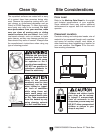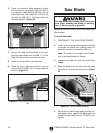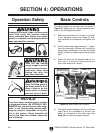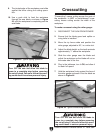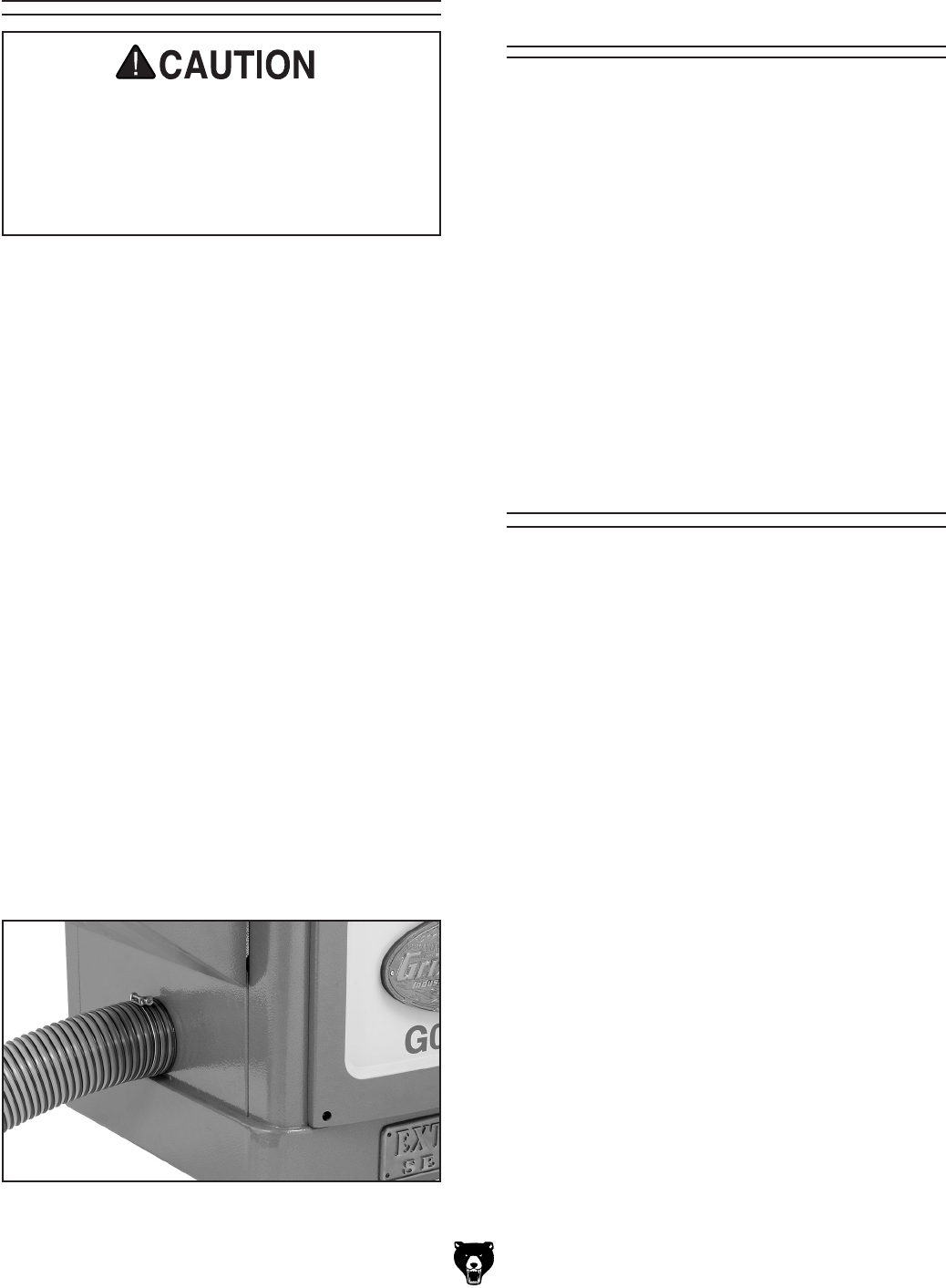
-26-
G0605X/G0606X Extreme Series 12" Table Saw
The adjustments listed below have been per-
formed at the factory and no further setup is
required to operate the machine.
However, because of the many variables involved
with shipping, we recommend checking the fol
-
lowing adjustments to ensure the best possible
results from your new machine:
Recommended adjustment checklist:
• Blade Tilt
Stops on Page 49
• Miter Slot to Blade Parallelism on
Page 51
Recommended
Adjustments
Dust Collection
DO NOT operate the Model G0605X/G0606X
without an adequate dust collection system.
This saw creates substantial amounts of
wood dust while operating. Failure to use a
dust collection system can result in short
and long-term respiratory illness.
Test Run
Once the assembly is complete, test run your
machine to make sure it runs properly.
The Model G0605X/G0606X is operated by an
ON/OFF push button switch equipped with a
STOP paddle and a safety pin for disabling the
switch, as shown in Figure 31.
If, during the test run, you cannot easily locate
the source of an unusual noise or vibration, stop
using the machine immediately, then review the
Troubleshooting on Page 45.
If you still cannot remedy a problem, contact our
Tech Support at (570) 546-9663 for assistance.
To test run the machine:
1. Read this manual and make sure you under-
stand SECTION 1: SAFETY on Page 7.
2. Review CIRCUIT REQUIREMENTS on Page
12, and make any necessary changes.
3. Make sure the blade guard and splitter (or
riving knife) are installed and correctly adjust
-
ed.
Components and Hardware Needed: Qty
4" Dust Hose (not included) ...............................1
4" Hose Clamp (not included) ............................
2
Dust Collection System (not included) ...............
1
Recommended CFM at Dust Port: 400 CFM
Do not confuse this CFM recommendation with
the rating of the dust collector. To determine the
CFM at the dust port, you must take into account
many variables, including the CFM rating of the
dust collector, the length of hose between the
dust collector and the machine, the amount of
branches or wyes, and the amount of other open
lines throughout the system. Explaining this cal
-
culation is beyond the scope of this manual. If you
are unsure of your system, consult an expert or
purchase a good dust collection "how-to" book.
To connect a dust collection hose:
1. Fit the 4" dust hose over the dust port, as
shown in
Figure 35, and secure in place with
a hose clamp
.
2. Tug the hose to make sure it does not come
off. Note: A tight fit is necessary for proper
performance.
Figure 35. Dust hose attached to dust port.



